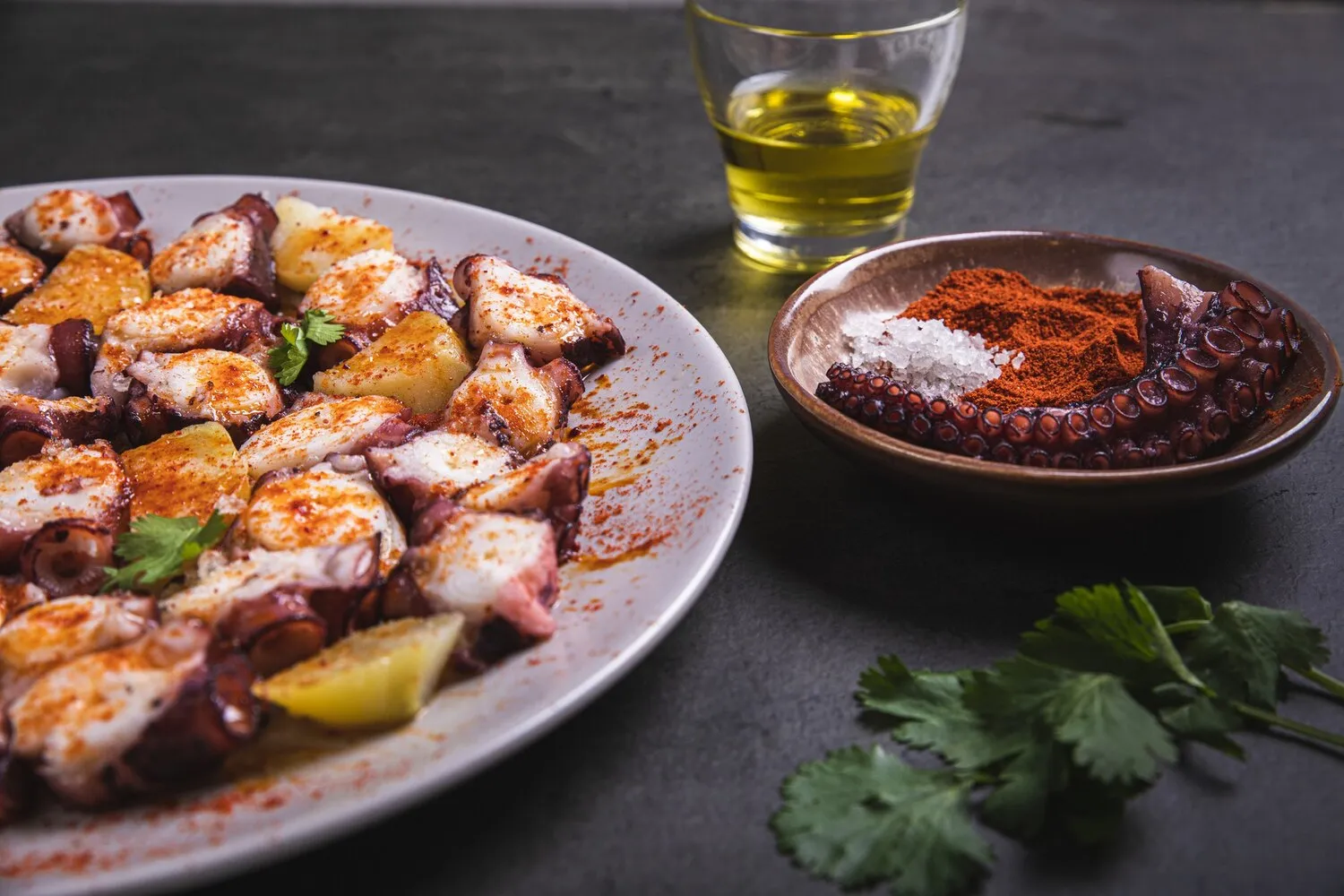
Pulpo a la gallega
Galician-style octopus, a traditional Spanish dish with octopus, paprika, and olive oil.
Nutrition Facts
* The % Daily Value (DV) tells you how much a nutrient in a serving of food contributes to a daily diet. 2,000 calories a day is used for general nutrition advice.
Galician cuisine, deeply rooted in Celtic traditions and influenced by its coastal location, has developed unique cooking methods over centuries. Pulpo a la Gallega likely originated as a simple, peasant dish utilizing readily available ingredients, perfected over generations through trial and error.
Pulpo a la Gallega is an integral part of Galician culture, often served at festivals, fairs, and gatherings. It is more than just food; it is a social experience.
Festivals and Fairs
Serving Pulpo a la Gallega at local festivals and fairs, particularly in Galicia, is a tradition. 'Pulpeiras' (octopus cooks) set up temporary stalls and prepare the dish fresh, creating a vibrant and communal atmosphere.
Communal Eating
The dish is often served on a wooden platter and shared communally. This promotes a sense of togetherness and shared experience among diners.
Symbol of Galicia
Pulpo a la Gallega is considered one of the most iconic dishes of Galicia and is a symbol of the region's culinary identity.
Pulpo a la Gallega is characterized by its tender octopus and a harmonious blend of smoky paprika, fruity olive oil, and the subtle sweetness of boiled potato. The dish focuses on highlighting the natural flavors of the ingredients.
The primary flavor is the rich, slightly sweet taste of perfectly cooked octopus. High-quality olive oil provides a smooth, fruity backdrop, while the pimentón (Spanish smoked paprika) delivers both smoky and sweet notes, sometimes with a touch of heat depending on the type used (dulce, agridulce, or picante). The potatoes offer a soft, earthy counterpoint, absorbing the flavors of the oil and paprika. Sea salt enhances the overall taste profile.
Tenderizing the Octopus
Traditionally, the octopus is tenderized by beating it against a hard surface or freezing it to break down the muscle fibers. This is crucial for achieving the desired texture.
Cooking Technique
The octopus should be cooked in boiling water, typically in a copper pot, without salt. The 'asustar' (scaring) technique, briefly dipping the octopus in and out of the boiling water several times, helps curl the tentacles and tenderize the skin.
Serving Temperature
Pulpo a la Gallega is best served warm, immediately after being cooked and seasoned, to fully appreciate its texture and flavors.
Paprika Quality
Using high-quality Spanish smoked paprika (pimentón) is essential for achieving the authentic flavor profile of the dish. Experiment with different types (dulce, agridulce, picante) to find your preferred level of smokiness and spice.
Explore additional Seafood/Tapas dishes and restaurants
Explore Seafood/TapasDiscover top dining spots and culinary experiences in Huelva.
Explore HuelvaLearn more about the food culture, restaurant scene, and culinary heritage of Spain.
Explore Spain